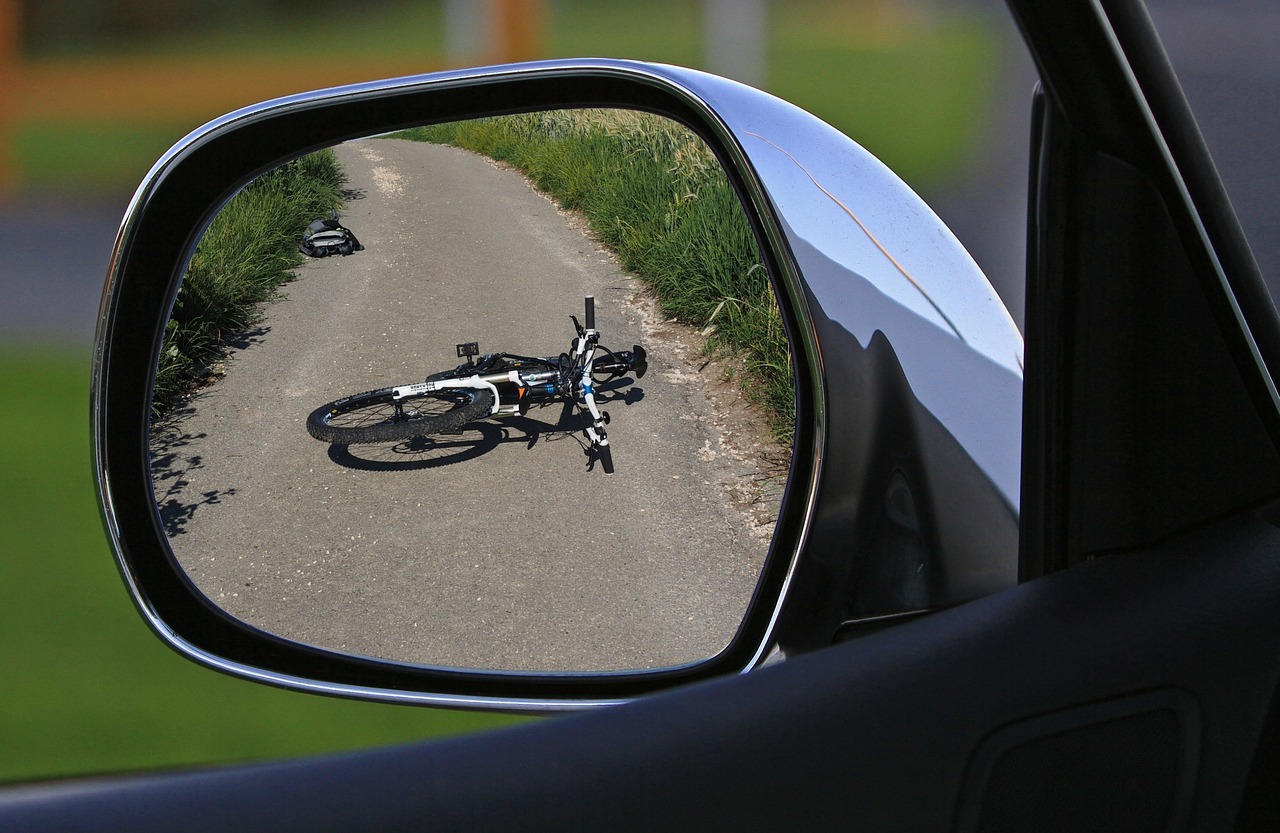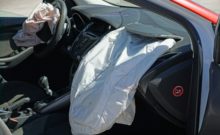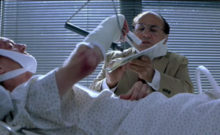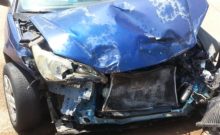In my early 20s I witnessed a horrific collision between a bicycle and a car. The bicyclist sped down a hill into an intersection, collided with an oncoming vehicle, and flew at least 15 feet through the air. His body skidded and crumpled on the hot pavement. He wore no helmet. I do not know if the young man on the bicycle survived the crash, but it was obvious he suffered life-threatening injuries.
The palpable tragedy of the incident has stayed with me. I still occasionally think of that day and the fact that the bicyclist’s life would never be the same. I also think of the driver who could have done nothing under the circumstances to avoid the crash.
As a lawyer, I have often encountered cases involving bicycle and car crashes somewhat similar to the one I witnessed. There is no hard and fast rule for determining who is liable. Rather, that is based on the law of negligence which I will not discuss in any great depth here.
I want to talk about the Nevada traffic code as it pertains to bicycles. It’s a lot more likely a driver or cyclist will be at fault if he or she was breaking the rules of the road at the time of the collision. Here, I will only discuss state laws in Nevada—your city or local laws might require more than what we talk about here. I’ll also offer some suggestions in addition to what the law requires.
Bicycles
- Nevada doesn’t require you to wear a helmet, but do it anyway
No Nevada law requires a cyclist of any age to wear a helmet, but all this really means is a bicyclist can’t be ticketed for riding without a helmet. However, failing to wear a helmet can affect a person’s ability to pursue an insurance claim for personal injuries.
More importantly, failing to wear a helmet can result in serious injury or death. Statistics collected by the National Highway Traffic Administration show that 9 out of 10 bicyclists who are killed were not wearing a helmet. It is a proven component of bicycle safety no matter your age or location.
It might not be your fault you were hit by a car, but your injuries and damages could be substantially worse because you failed to follow the first rule of bicycle safety. It’s a lot easier for an insurance company to argue your injuries were partially your own fault since a reasonable bicyclist would have worn a helmet.
- Follow traffic laws
Nevada does not define a bicycle as a “vehicle” in the same category as a car. NRS 482.135. (It’s worth noting that drunk cyclists aren’t guilty of a DUI or CUI but can be prosecuted for reckless endangerment under NRS 202.595.) However, anyone using a bicycle on the road has to follow most of the same traffic laws as motor vehicle drivers. NRS 484B.763. If, for example, you turn left without yielding the right of way to oncoming traffic, you probably won’t have much of a case for civil liability if you are hit.
Bicyclists are required to obey traffic control devices and come to a full stop before turning right at a red light. They are also required to ride as far to the right as practicable within the lane of travel. If you as a cyclist break traffic laws and contribute to a wreck, your insurance claim could be reduced or completely denied. You could even be liable yourself.
- Use hand signals
Bicyclists are required to use hand signals when turning or changing lanes:
- Left turn: Hand and arm extended horizontally.
- Right turn: Hand and arm extended upward.
- Stop or decrease speed: Hand and arm extended downward.
- Reentering lane of traffic from parked position: Hand and arm extended horizontally.
NRS 484B.420. This video should teach you all you need to know about hand signals.
- Use lamps and reflectors when it’s dark out
Cycling in the dark can be dangerous, but there is a way to do it that doesn’t violate traffic laws. When I still lived at home I used to ride from my late-night shift at Taco Bell to my early-morning shift at Kohl’s. My dad bought me lights and reflectors to install on my bike. Not only did it allow drivers to see me, but it also made my life easier while pedaling the streets in the ungodly hours of the morning. If riding in the dark, the law requires the following: (1) a white headlamp on the front of the bicycle, (2) a red reflector on the rear of the bicycle, and (3) reflective material visible from each side of the bicycle. NRS 484B.783(1).
That is just the minimum the law requires. If you must ride your bike at night, take every reasonable measure to make sure you are visible to traffic and can see the road in front of you.
- Umm… have brakes
The law requires cyclists to have brakes: “Every bicycle or electric bicycle must be equipped with a brake which will enable the operator to make the wheels skid on dry, level, clean pavement.” NRS 484B.783(2).
I’m not going to explain why every bicycle should have working brakes. Use common sense. Please just do it. Dragging your feet on the ground to stop yourself just isn’t good enough. Don’t risk your life to save a few dollars on brakes.
- Keep your hands free
As a kid I used to take frequent trips to the store on my bike to buy milk or bread or whatnot. I often tried to carry grocery bags in each hand while also gripping the handlebars. This made steering much more difficult due to the weight of the bags. Plus, my knees would hit the groceries, causing them to swing around and throw me off balance.
While this practice wasn’t against the law, it was a terrible idea. It is not illegal to carry items in your arms while riding a bicycle as long as one hand remains on the handlebars at all times. NRS484B.780. The safest practice, however, is to use a backpack (or, if you must, a fanny pack) to carry items so you can keep both hands on the bike. Being able to react quickly to unexpected circumstances will help you avoid collisions.
- Where should I ride?
There aren’t any Nevada state laws prohibiting cyclists from riding on the sidewalk, and there are lots of areas where it is relatively safe to do so. However, when on the sidewalk, always ride slowly and look out for pedestrians. Also realize every driveway and cross-street is a potential hazard as vehicles could emerge at any moment with little time to react. For these reasons, it is usually safer to ride on the right side of the street or bike lane.
Always ride with the flow of traffic. This helps drivers predict your movements, and it also improves your visibility. Avoid erratic maneuvers, and always be courteous to other drivers.
Not every shoulder is a bike lane. Bike lanes are designed for bicycle travel and are marked with a paint stencil of a person riding a bicycle. Use them wherever they are available.
- One at a time, please
You can’t have more than one person riding on a bicycle unless it was designed and equipped to do so. NRS 484B.770. Some of us might have fond memories of carrying our younger siblings on the handlebars to ride into town or for a leisurely trip around the block. But this practice is against the law because it’s dangerous. So unless you’ve got the proper devices to carry children, or you’ve got a tandem bike, only ride one at a time.
Cars and Bicycles
I’m not going to attempt to summarize motor vehicle laws. Rather, I’m going to talk about how motor vehicles must treat bicycles.
Motor vehicles have some specific duties when driving near bicycles. Here are a few of them:
- Pay attention to bikes
“The driver of a motor vehicle shall not intentionally interfere with the movement of a person lawfully riding a bicycle or an electric bicycle.” NRS 484B.270(1). This section covers intentional misconduct; if you’re driving a car and see a bicyclist, don’t intentionally get in that person’s way. If you’re upset or just being a jerk and interfere with bike traffic, you will be liable if you cause an injury.
- Pass at a safe distance
When passing a bicycle, a motor vehicle driver must move to the left lane if there is more than one lane, and if there isn’t, pass at a safe distance a minimum of 3 feet. NRS 484B.270(2).
- Stay out of the bike lane!
Cyclists in a bike lane almost always have the right of way. Motor vehicles must stay out of the bike lane except in the following circumstances:
(a) When entering or exiting an alley or driveway;
(b) When operating or parking a disabled vehicle;
(c) To avoid conflict with other traffic;
(d) In the performance of official duties;
(e) In compliance with the directions of a police officer; or
(f) In an emergency.
NRS 484B.270(3). Don’t drive in or through a bike lane unless it’s for one of the above reasons. Even then, always check for cyclists.
- “Exercise due care”
Nevada’s traffic code requires motor vehicle drivers to “exercise due care to avoid a collision with a person riding a bicycle or an electric bicycle.” This duty includes honking to avoid the collision. NRS 484B.270. “Due care” is a term of art in the law, but in layman’s terms it basically means “being careful.” Collisions can almost always trace back to a decision, such as the decision to send a text message while driving or the decision to drive a car through the bike lane without checking a blind spot. A driver may not have intended to hurt anyone but nevertheless made a careless decision that led to a wreck. The law holds that driver liable.
Crashes involving a cyclist are often as tragic as the one I witnessed in my early 20s. It’s a simple matter of physics. The meeting of a multi-ton motor vehicle and a 150 pound (give or take) bicyclist will not typically end well for the bicyclist. Adherence to the rules of the road can help you as a cyclist to avoid serious injury or death, and obeying traffic laws and the duty to exercise due care can help you as a motor vehicle driver to avoid causing a crash.
If you’ve been in a car or bicycle crash in Nevada and you think someone else is liable, give us a call at 725-877-2804. We’ll meet with you for free.
Chris Beckstrom







